The heart is a powerful organ
Your heart is constantly working throughout your lifetime—never pausing to rest. A heart pumps some 2.5 billion times in an average human lifespan, or about 100,000 times a day and 35 million times a year. Of course, at the end of life, everyone’s heart stops beating.
However, sometimes—due to injury, damage, or disease—the heart stops pumping blood normally and needs a restart to get it back on track. So what happens if or when your heart stops beating? Here’s how cardiologists explain the causes and risks.
When your heart stops beating, it’s called cardiac arrest
When the heart abruptly stops pumping blood, it’s called sudden cardiac arrest (SCA). As the name implies, it can occur suddenly without warning.
There are many causes of SCA, including irregular heart rhythms and/or abnormalities present at birth, as well as an enlarged heart, heart valve problems, and heart disease. In addition, near drownings, electric shock, drug use, hypothermia, and other accidents and injuries can cause the heart to stop beating.
A cardiac arrest often results in sudden death, but there is a chance of survival if bystanders take quick action. About 12% of people who have a cardiac arrest outside a hospital survive, as do 25% of those who have one at a hospital.
A cardiac arrest is not the same as a heart attack
There is a difference between a heart attack and cardiac arrest: A heart attack may precede a cardiac arrest, but they are not the same. According to the American Heart Association, a heart attack is a circulation problem—a blockage in the blood flow to the heart—but the heart can continue to pump.
A person having a heart attack may feel chest pain and other heart attack symptoms (like nausea, sweating, fatigue, and more), which are caused by the reduction of blood flow to the heart. When a blockage in an artery reduces blood flow, areas of heart tissue start to die (so rapid treatment is necessary), but the heart can continue to pump blood.
During a heart attack, a person may remain conscious and be able to talk about the symptoms they are experiencing—but that’s not possible with a cardiac arrest. (Here are the warning signs you might be at risk for cardiac arrest.)
You immediately lose consciousness
When the heart stops beating or pumping blood, that individual loses consciousness and falls to the ground. Many people who have had a cardiac arrest say they had no symptoms at all just before they collapsed.
“Other people may report that they felt dizzy, tired, cold, or weak right before they passed out,” says Dr. Gulkarov. An onlooker may notice the person’s eyes rolling back and/or witness a seizure.
“The heart is tasked with pumping blood to all parts of the body including the brain, and when the brain doesn’t get blood, a person can seize or pass out,” he says. “The first cells to die during cardiac arrest are brain cells.”
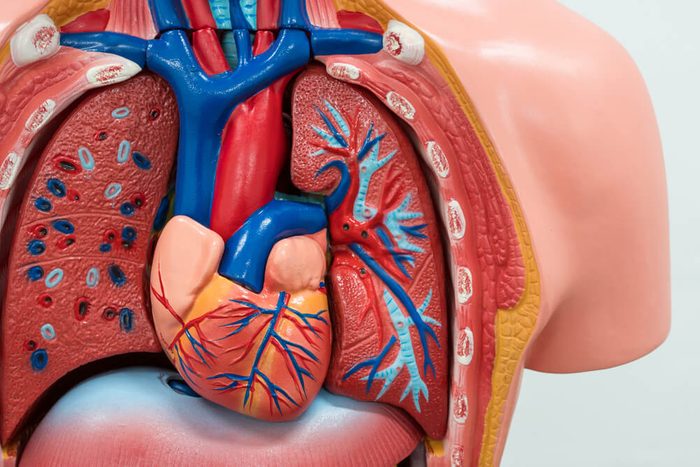
Your heart’s natural pacemaker malfunctions
The sinus node, located in your heart’s upper right chamber, is a specialized group of cells that generate electrical impulses through the heart, explains Iosif Gulkarov, MD, a cardiothoracic surgeon at the Heart Institute, Staten Island University Hospital in Staten Island, New York.
This cluster of cells functions as your heart’s natural pacemaker; they produce electrical signals that tells the muscles when to contract. Normally, the heart’s upper chambers contract first, then the lower chambers, which results in the familiar “lub dub” of a heart beat. The “dub” part of the beat is the sound of the heart valves closing after the muscular lower heart chambers, the ventricles, push blood to where it needs to go in the body.
When the cells misfire, you get an arrhythmia. There is an impairment in your heart’s rhythm that interferes with the job of pumping blood and maintaining circulation. With a cardiac arrest, the heart stops beating due to this electrical disturbance. (Here are simple ways to lower your heart rate.)

Your heart may be quivering, but not pumping blood
There are abnormal rhythms that can cause the heart to pump blood abnormally, including ventricular tachycardia, which is marked by a quickened heartbeat (above 100 beats per minute). In this case, the lower heart chambers beat out of sync with the heart’s upper chambers. Ventricular tachycardia symptoms include a racing heart or heart palpitations, breathlessness, fainting, fatigue, and dizziness.
Brachycardia is a heart rate that has slowed below 60 beats per minute. (A normal heart rate is 60 to 100 beats per minute.) Bradycardia symptoms can include dizziness, fainting, shortness of breath, or confusion because the heart is not pumping an adequate amount of blood to the brain.
Neither of these arrhythmias are necessarily life threatening, but need to be checked out. (There are also other kinds of tachycardia and arrhythmias that are less serious, and arrhythmias can be treated with medication and surgery.)
In some cases, however, you can progress to a potentially lethal ventricular arrhythmia that is associated with cardiac arrest—ventricular fibrillation. This is a quick and chaotic rhythm in which the heart quivers with uncoordinated contractions, bringing your circulation to a halt.
When that happens, you need a defibrillator—a device that shocks the heart—to reset its natural rhythm. (This woman went nearly a decade with a misdiagnosed heart arrhythmia—read her story.)
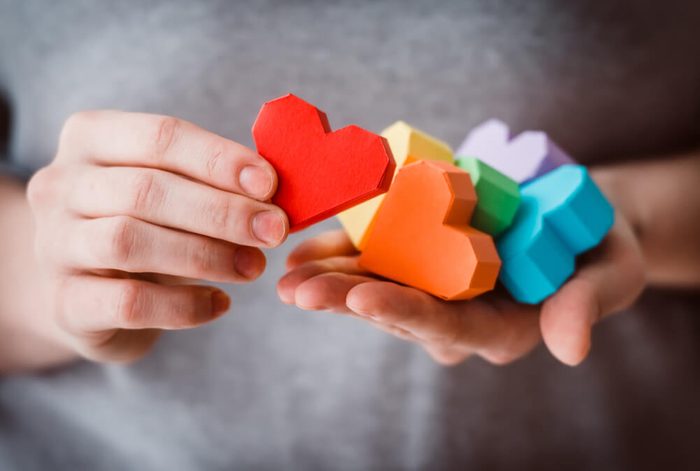
Your pulse will stop
What is a pulse? A pulse, or your heart rate, is the number of times your heart beats in a minute. You can easily measure this by laying two fingers on any part of the body where you can feel a heartbeat—the side of the neck, a wrist, or inside an elbow. Just do it for 60 seconds and count the beats. (Never use your thumb, however, it has a pulse of its own.)
To check someone’s pulse, place your index and middle finger on the inside of their wrist, just below the thumb. Press gently, and count the number of beats in 30 seconds. Double it for the heart rate—so 30 beats in 30 seconds would mean the person has a heart rate of 60 beats per minute.
When someone is having a cardiac arrest, the pulse is weak or nonexistent because the heart is no longer beating. This is one of the quickest ways to tell if someone who is unconscious needs cardiopulmonary resuscitation (CPR).
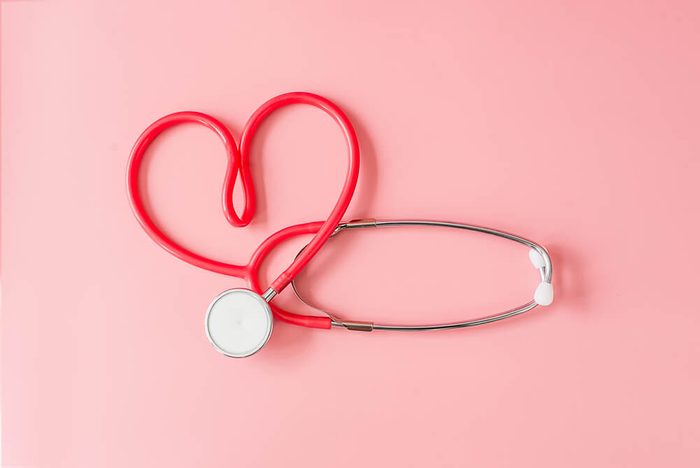
You will need CPR
Any person who is in a cardiac arrest needs a shock to the heart to survive (more on that later.) However, CPR can keep a person alive until that can happen. Needless to say, this is life or death. Without CPR, a person in cardiac arrest will die within minutes.
If you witness someone pass out, try to rouse them, and if you can’t, check their pulse. “If there is no pulse, start cardiopulmonary resuscitation (CPR or chest compressions) immediately and call 911,” says Konstantinos Dean Boudoulas, MD, an interventional cardiologist at The Ohio State University Wexner Medical Center in Columbus.
CPR manually gets the blood moving through the body and is a person’s best shot at survival. (Here’s how to do CPR so you know what to do if someone experiences a life-threatening emergency.)
Ninety percent of people who suffer out-of-hospital cardiac arrests die, but CPR, if performed in the first few minutes, can triple a person’s odds of survival, according to the American Heart Association. Cardiac arrest can also occur in the hospital. (Survival rates are rising for people who have a cardiac arrest while in the hospital, but unfortunately if it happens at night or on a weekend, you’re less likely to survive, according to a 2018 study the Journal of the American College of Cardiology.)
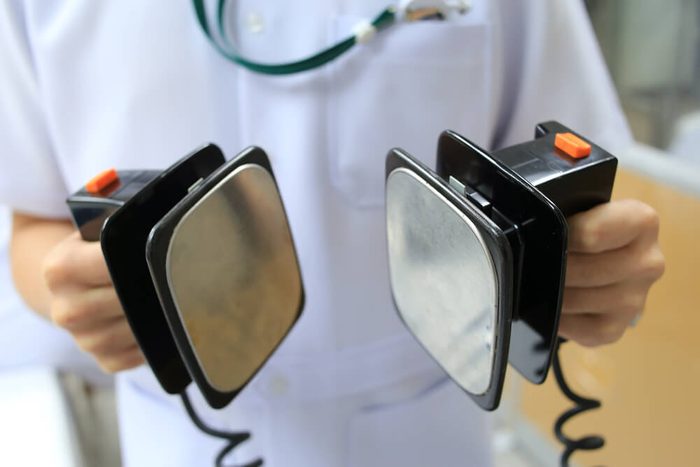
You need your heart shocked STAT
Automated external defibrillators (AEDs) are everywhere today—schools, airports, hotels, restaurants, gyms, you name it. They are designed to be used by anyone, and they do save lives. (Here’s how bystanders used an AED to save a college student’s life.)
Defibrillators can instantly analyze heart rhythms to determine if they are “shockable,” which means reversible. Defibrillation should be started as soon after CPR as possible. Further treatment may be needed after an abnormal rhythm is reversed to keep it from coming back.
If this doesn’t work, some people can be placed on an automated CPR machine and transferred to a hospital where they are immediately placed on a heart-lung bypass machine for support. This is known as extracorporeal cardiopulmonary resuscitation (ECPR), and it allows interventional cardiologists to look for reversible causes of the arrest.
“It’s a game changer,” explains Dr. Boudoulas.
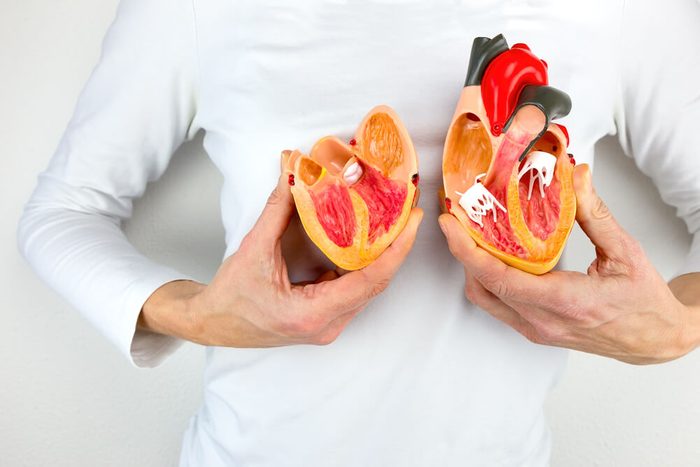
You need a diagnosis
Asystole is a cardiac arrest-causing rhythm where there is no electrical activity visible on the electrocardiogram (ECG) monitor, explains Dr. Boudoulas. Pulseless electrical activity (PEA) occurs when the ECG shows a heart rhythm that should produce a pulse but does not.
“Essentially, sudden cardiac death results from arrhythmia indirectly or directly,” he says. “Heart disease can cause a heart attack, which can lead to arrhythmia.” (Take necessary precaution with these 30 ways to prevent heart disease.)
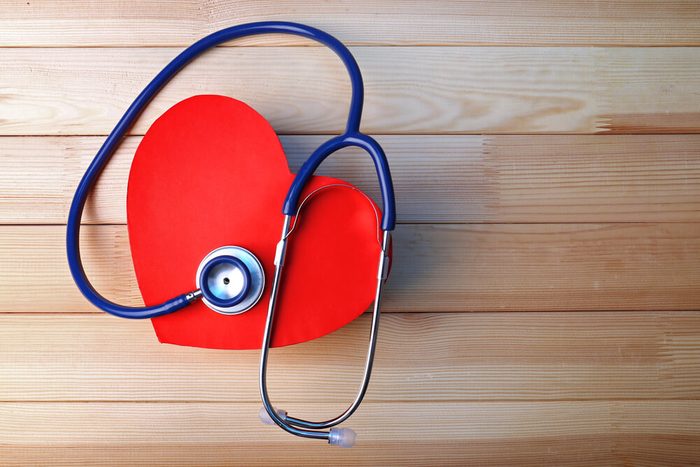
The bottom line
If your heart stops beating, survival depends on the cause of the arrest as well as the timeliness of treatment. Each year, there are 365,000 SCAs in the United States—and about 90 percent are fatal.
Knowing CPR and acting quickly to use call an ambulance and use an AED (if one is available) provides the best chance of survival in the face of cardiac arrest. (Look out for these silent signs of heart trouble you shouldn’t ignore.)

